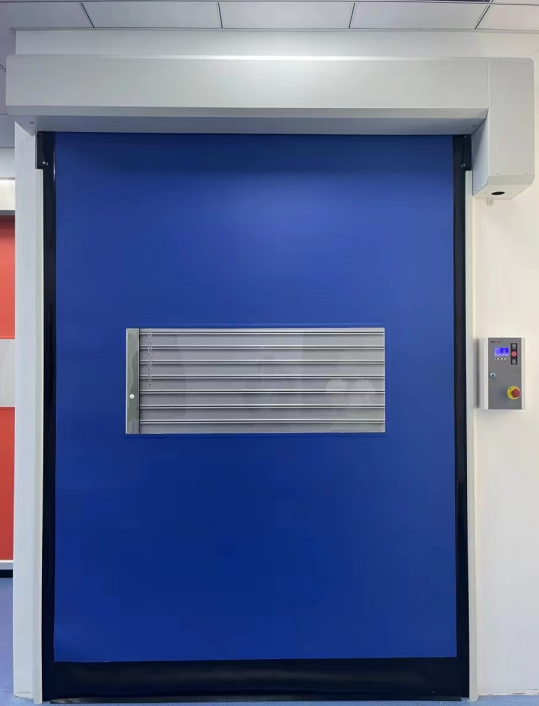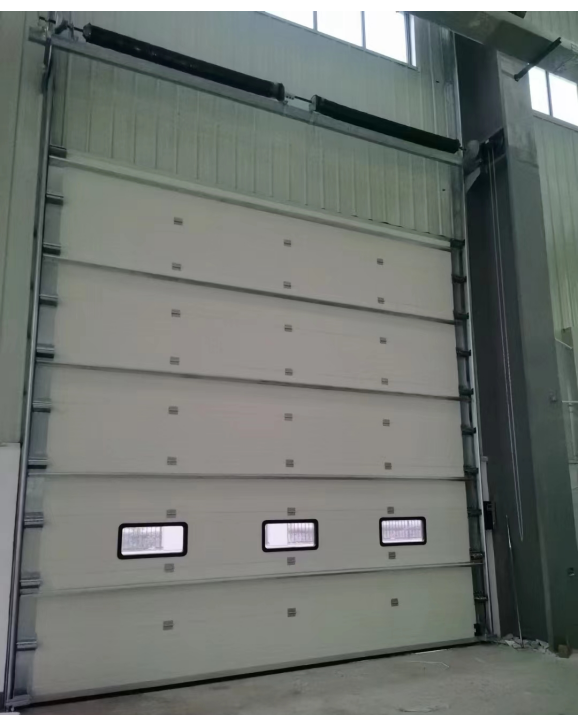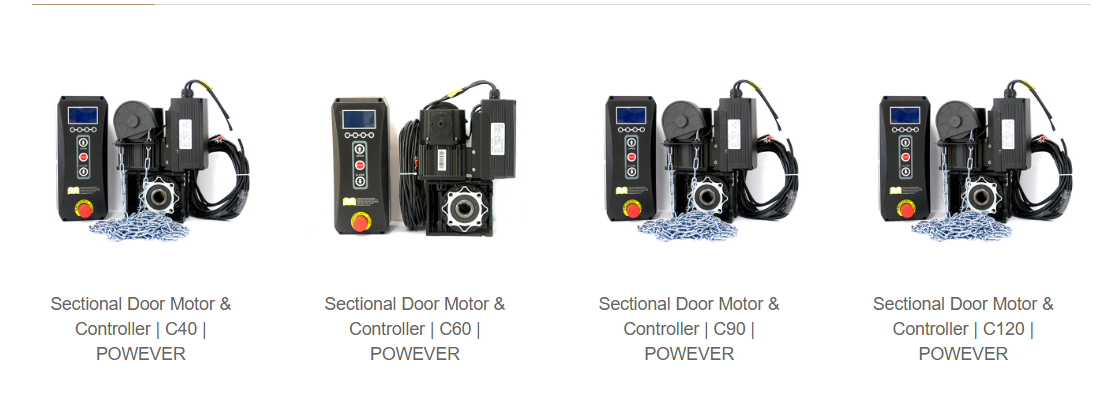
Roll-up doors and overhead doors are both types of doors commonly used in residential, commercial, and industrial settings, but they have distinct differences in design, operation, and application.
Roll-up Doors:
Design: Roll-up doors are typically constructed from horizontal slats or sections that are connected to each other. When the door is opened, these slats roll up and coil around a drum or barrel located above the door opening.
Operation: They operate on a spring-loaded mechanism that allows the door to roll up with ease. The coiling action of the door means that it doesn't extend outward when opening, which is beneficial for spaces with limited clearance outside the door opening.

Usage: Roll-up doors are often used in garages, small warehouses, retail spaces, and for securing equipment or storage areas. They are also commonly found on commercial vehicles and trailers.
Size: They are generally available in smaller sizes compared to overhead doors and are suitable for applications where the opening is not very large.
Overhead Doors:
Design: Overhead doors consist of several horizontal panels that are hinged together. When the door is opened, these panels pivot up and back, moving along tracks on either side of the door opening.
Operation: Overhead doors can be manually operated or automated with the use of an electric motor and remote control. They often have counterbalance systems, such as springs or counterweights, to assist with lifting the door.

Usage: Overhead doors are versatile and can be found in residential garages, commercial buildings, and industrial facilities. They are used for vehicle access, loading docks, and as entryways for large equipment.
Size: They can be manufactured in larger sizes than roll-up doors and are suitable for wide and tall openings, making them ideal for commercial and industrial applications.
In summary, the main difference lies in the way the doors open and the mechanisms they use. Roll-up doors coil around a drum when opened, while overhead doors move up and along tracks. Each type has its own set of advantages and is chosen based on the specific needs of the space and the size of the opening.
The difference of high speed roll up door motor and sectional door motor.
High-speed roll-up doors and sectional doors are two distinct types of door systems commonly used in industrial, commercial, and some residential applications. Each type of door operates differently and, as a result, requires a different type of motor to function efficiently. Below, we'll explore the characteristics and differences between high-speed roll-up door motors and sectional door motors.
High-Speed Roll-Up Door Motors:
High-speed roll-up doors are designed for rapid opening and closing, often achieving speeds of up to several feet per second. These doors are typically used in environments where minimizing the time that the door is open is critical, such as in food processing facilities, cold storage, or cleanrooms. The high-speed operation helps to maintain temperature control, reduce energy loss, and enhance productivity.
https://www.highspeeddoor.cn/product/High-Speed-Door-Servo-Moto-POWEVER.html
The motors for high-speed roll-up doors are engineered to provide quick and smooth operation. They are usually direct-drive motors, meaning that the motor is directly connected to the door's drum without the use of belts or chains. This direct connection allows for precise control and rapid acceleration and deceleration. High-speed door motors often feature advanced electronics that enable variable speed control, soft starts and stops, and safety features like obstacle detection.
These motors are typically more robust and are designed to handle the frequent cycling that high-speed doors undergo. They must be reliable and durable to ensure that the door can operate thousands of times per year without significant wear and tear.
Sectional Door Motors:
Sectional doors, on the other hand, are composed of several horizontal panels that hinge together and move along tracks on both sides of the door opening as they open and close. These doors are common in residential garages and commercial buildings where space is at a premium, as they don't extend outward when opening.
https://www.highspeeddoor.cn/list-9-57.html

Sectional door motors are designed to lift the weight of the door panels and move them along the tracks. They often use a chain or belt drive system, where the motor rotates a gear that turns a chain or belt, which in turn moves the door along the tracks. This type of motor is generally less complex than those used for high-speed roll-up doors and may not require the same level of precision or speed control.
Sectional door motors are built to handle the vertical lifting motion and the weight distribution of the door panels. They are usually equipped with safety features such as automatic reverse if an obstruction is encountered. While sectional doors can be opened and closed multiple times a day, they are not designed for the high frequency and speed of operation that high-speed roll-up doors are capable of.
Comparison:
Speed and Operation: High-speed roll-up door motors are designed for rapid operation, with advanced controls for speed and safety. Sectional door motors are designed for a more deliberate and controlled lifting action.
Mechanism: High-speed roll-up door motors often use a direct-drive mechanism, while sectional door motors typically use a chain or belt drive.
Frequency of Use: High-speed roll-up doors are intended for environments where doors need to be cycled frequently and quickly. Sectional doors are suitable for applications with lower frequency of use.
Durability: High-speed roll-up door motors are built to withstand high cycle rates and are often more robust. Sectional door motors are durable but may not be as heavily built due to lower expected cycle rates.
In summary, the choice between a high-speed roll-up door motor and a sectional door motor depends on the specific requirements of the application. High-speed roll-up door motors are ideal for situations requiring rapid door movement and high cycle rates, while sectional door motors are better suited for applications where the door will be opened and closed less frequently and at a slower speed.
Company Name:Shanghai Honwei Automation Co., Ltd. HITCH (SHANGHAI) IMPORT& EXPORT CO., LTD.
Name: Phyllis Liang
Mobile:+86 15316076035
Tel:+86 21 61767181
Whatsapp:+86 15316076035
Email:info@highspeeddoor.cn
Email:kevin.jiang@powever.com.cn
Add:Room 301-302, Building 1, No. 1355, Chengbei Road, Jiading District, Shanghai
Post code:201800